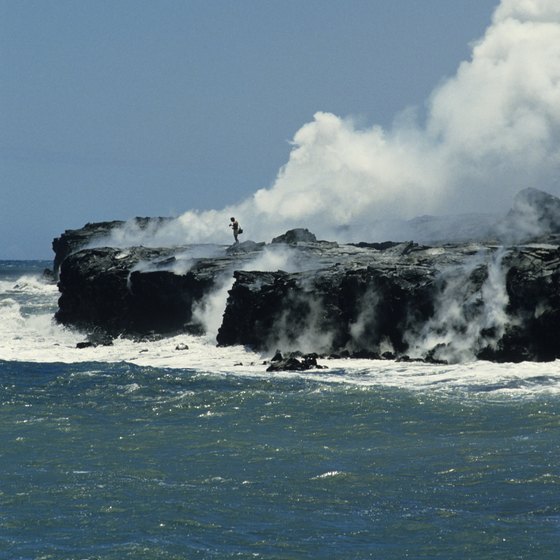
Flood basaltsįlood basalts are an exceptional form of lava flow. These lava domes are particularly hazardous as they tend to be unstable and can collapse, causing pyroclastic density currents.

Because of the high viscosity of the lava, it cannot travel far from the vent and a dome of lava builds up. Lava domes form when high-viscosity lava is slowly erupted from a volcano. The rate of movement of lavas typically ranges from a few metres per hour for high-silica, andesitic lavas to several kilometres per hour for fluid basalts. They form short, thick flows or steep-sided lava domes that don’t travel far from volcanic vents.

High-viscosity, silicon-rich andesites are much less fluid than basalt and are erupted at temperatures of around 700–900☌. Low-viscosity, iron/magnesium-rich basalts are the most fluid of the common lava types and are typically erupted at temperatures of 1100–1200☌.

The viscosity - how easily a fluid can flow - of lava flows generally increases with silica content and decreases with a rise in temperature and water content. ‘Tephra’ is used as the catch-all term to describe all erupted clasts regardless of size, while the term ‘ash’ describes particles of less than 2 mm in size. Volcanic products are typically named according to clast (particle) size, which can range from metres down to microns in size. For those living alongside volcanoes, knowing about volcanic hazards is just one way that people can reduce their risk. There can be emotional, societal and economic benefits. Such hazards can impact areas hundreds or thousands of kilometres from the volcano, with the potential for significant health and economic impacts (BGS, 2012).Įven though volcanoes can be dangerous, there are lots of reasons why people live alongside them. Volcanic activity also produces hazards that can affect areas far from the volcano, such as tephra or ash falls, releases of gas and tsunamis. Several hazards may affect the area around the volcano, such as lava flows, pyroclastic flows, lahars, jökulhlaups and landslides or debris avalanches. What are we doing about climate change?Ī volcanic hazard refers to any potentially dangerous volcanic process that puts human lives, livelihoods or infrastructure at risk of harm.Understanding carbon capture and storage.What causes the Earth’s climate to change?.NGR hydrocarbons (well samples) database.Palaeontology and biostratigraphy collections.Donations and loans of materials collections.Engineering and Geotechnical Capability.Integrated resource management in Eastern Africa.Rock Volume Characterisation Laboratory Cluster.Fluid and Rock Processes Laboratory Cluster.Equality, diversity and inclusion at BGS.Environmental policy and sustainability strategy.The Mauna Loa eruption map below created by the National Park Service shows the direction of lava flows resulting from previous eruptive events since 1843. Mauna Loa eruptions usually involve high-volume lava flows that are capable of traveling long distances. It is the largest active volcano on Earth, standing at 13,681 feet above sea level, and 30,000 feet above the bottom of the ocean-greater than the height of Mount Everest. This is an average of one eruption every five years over this period.

Mauna Loa is among Earth's most active volcanoes, having erupted more than 30 times since its first well-documented eruption in 1843. The map created by the County of Hawaii, which covers the Big Island, is providing updates about the eruption, including information about lava flows, ashfall and road closures. In the past few hours, the USGS has recorded more than 60 earthquakes in the Mauna Loa area at the time of writing, with the largest of these measuring 4.2 in magnitude. But if the eruption migrates to areas outside the summit, as has occurred during previous events, there is a chance that lava could start flowing downslope. The HVO said lava flows will most likely be confined within the walls of the caldera if the eruption remains at the summit. The volcano, the biggest on Earth, started erupting on November 27, 2022. This compilation of images includes a graphic about historic lava flows at Mauna Loa (L), a current hazard impact map (R) and lava at the caldera (Bottom).


 0 kommentar(er)
0 kommentar(er)
